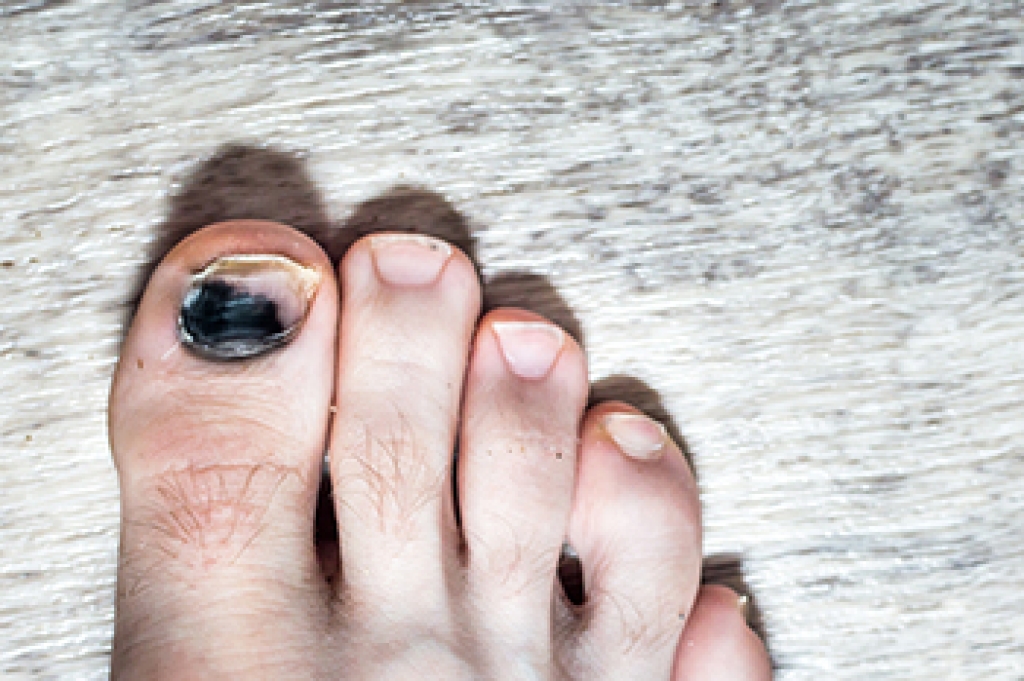
Throbbing pain in one or more toenails can make running an uncomfortable exercise. If your toenail turns black, blue, or gray after a long run, it can be a sign of bleeding underneath the nail. This condition is known as a subungual hematoma, more commonly as runner’s toe. If the toenail raises from the nail bed, it is likely to fall off, but eventually, a new nail will grow to replace it. The main reason for black toenails is the continued rubbing of the toe against the inside of the shoe. This is frequently the result of running downhill or wearing running shoes that don’t fit properly. Taking a break from running, and avoiding downhill terrain are suggested as ways to treat runner’s toe. If swelling and pain persist, it is a good idea to see a podiatrist for an examination. One possible treatment is to drain the fluid beneath the nail by drilling a hole in it, a procedure called trephination. Your podiatrist can suggest the proper treatment to get you back to running.
Exercising your feet regularly with the proper foot wear is a great way to prevent injuries. If you have any concerns about your feet, contact Anas Khoury, DPM of North Eastern Foot & Ankle Specialists. Our doctor will treat your foot and ankle needs.
How to Prevent Running Injuries
Many common running injuries are caused by overuse and overtraining. When the back of the kneecap starts wearing out and starts causing pain in your knee, this is commonly referred to as runner’s knee. Runner’s knee is a decrease in strength in your quadriceps and can occur if you’re not wearing properly fitted or supporting shoes. To prevent runner’s knee, focusing on hip strengthening is a good idea, as well as strengthening your quads to keep the kneecaps aligned.
What Are Some Causes of Running Injuries?
- One cause of a common running injury is called iliotibial band syndrome.
- Plantar fasciitis is also another common injury.
- Stress fractures can occur from overtraining, lack of calcium, or even your running style.
Best Ways to Prevent Running Injuries
- Wear footwear that fits properly and suits your running needs.
- Running shoes are the only protective gear that runners have to safeguard them from injury.
- Make a training schedule. Adding strengthening exercises as well as regular stretching can help keep you strong and limber and can lessen the possibility of injuries.
- Stretching keeps muscles limber; this will help you gain better flexibility.
If you have any questions, please feel free to contact our office located in Passaic, NJ . We offer the newest diagnostic and treatment technologies for all your foot care needs.
